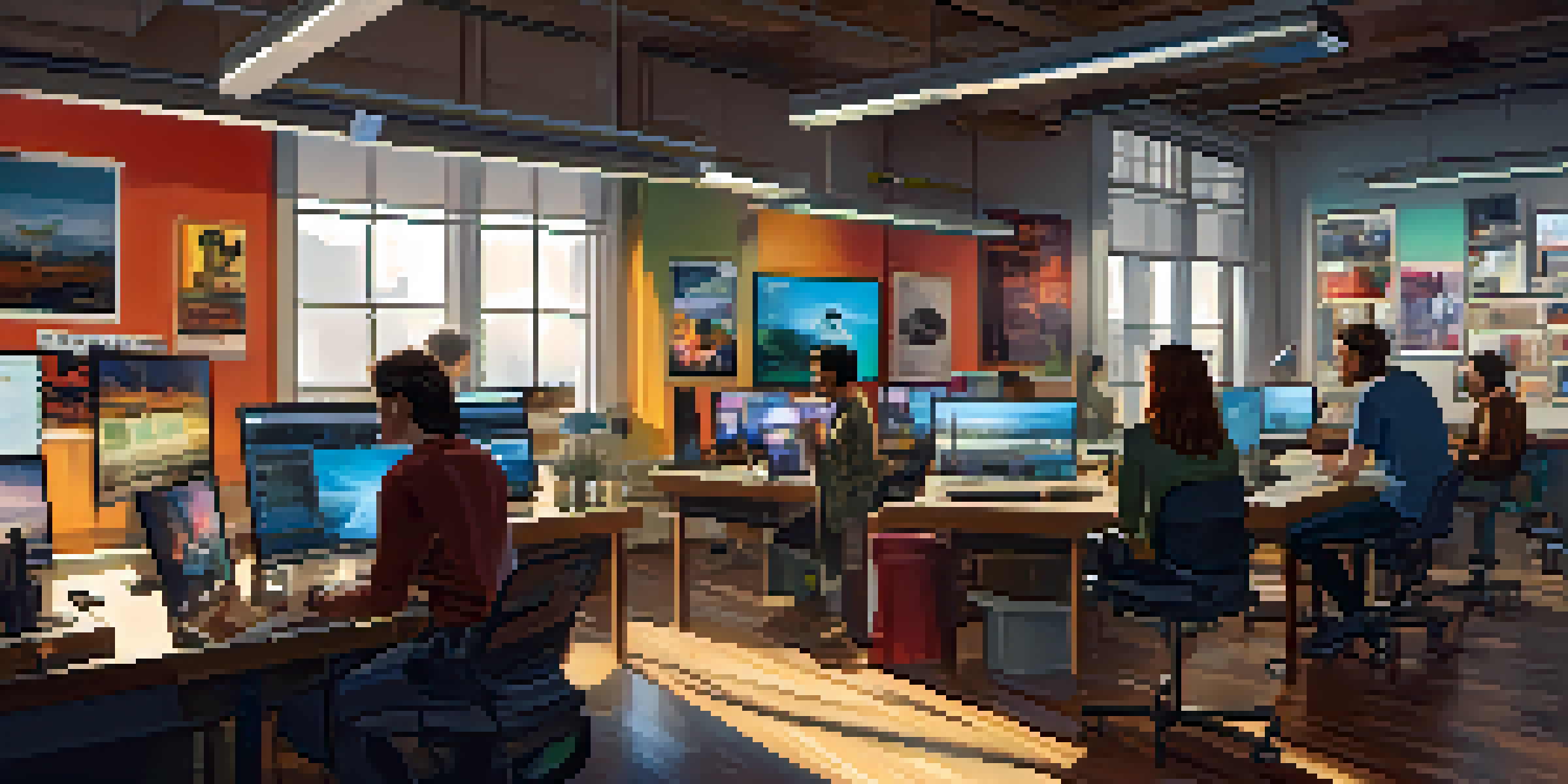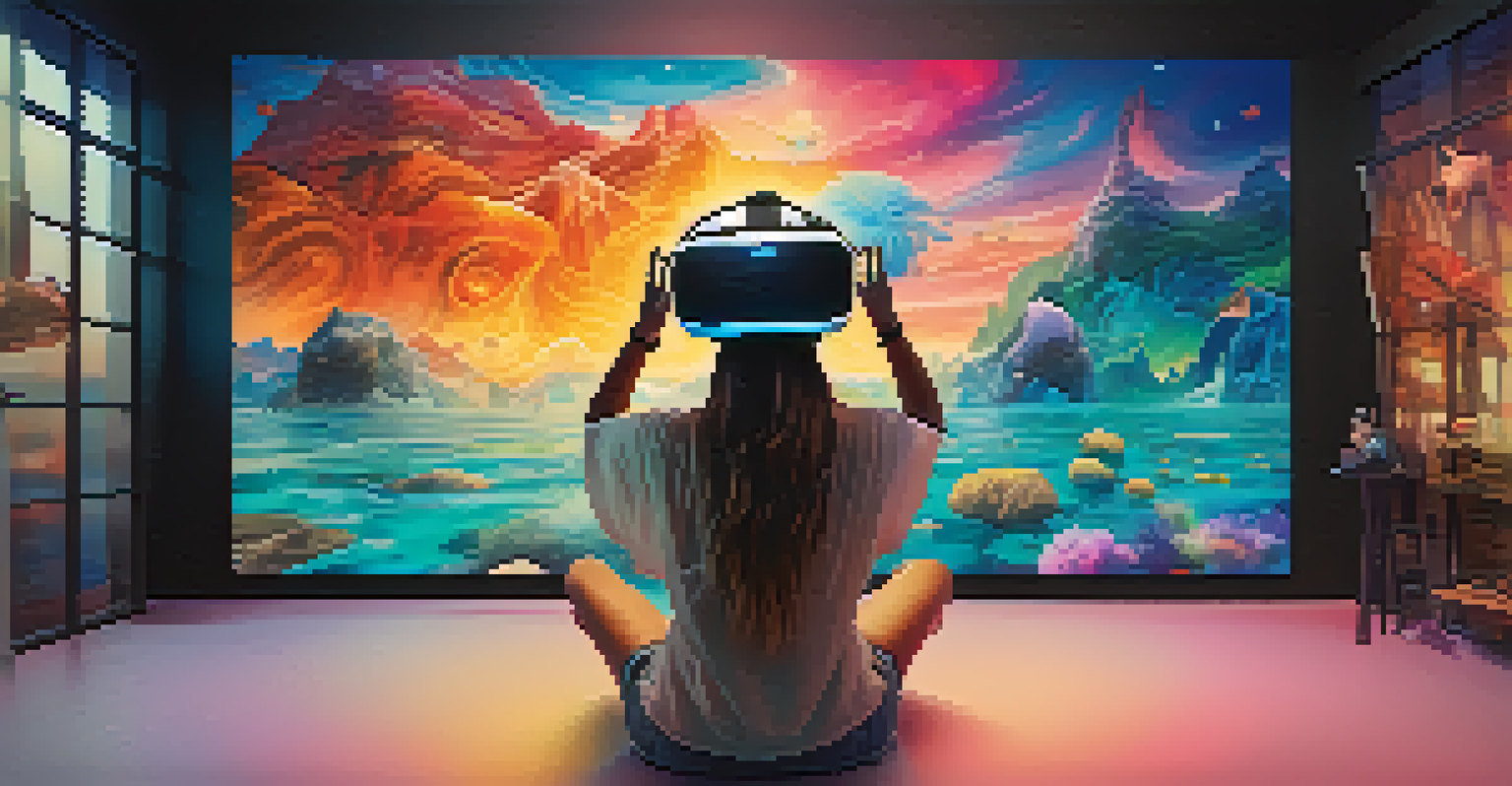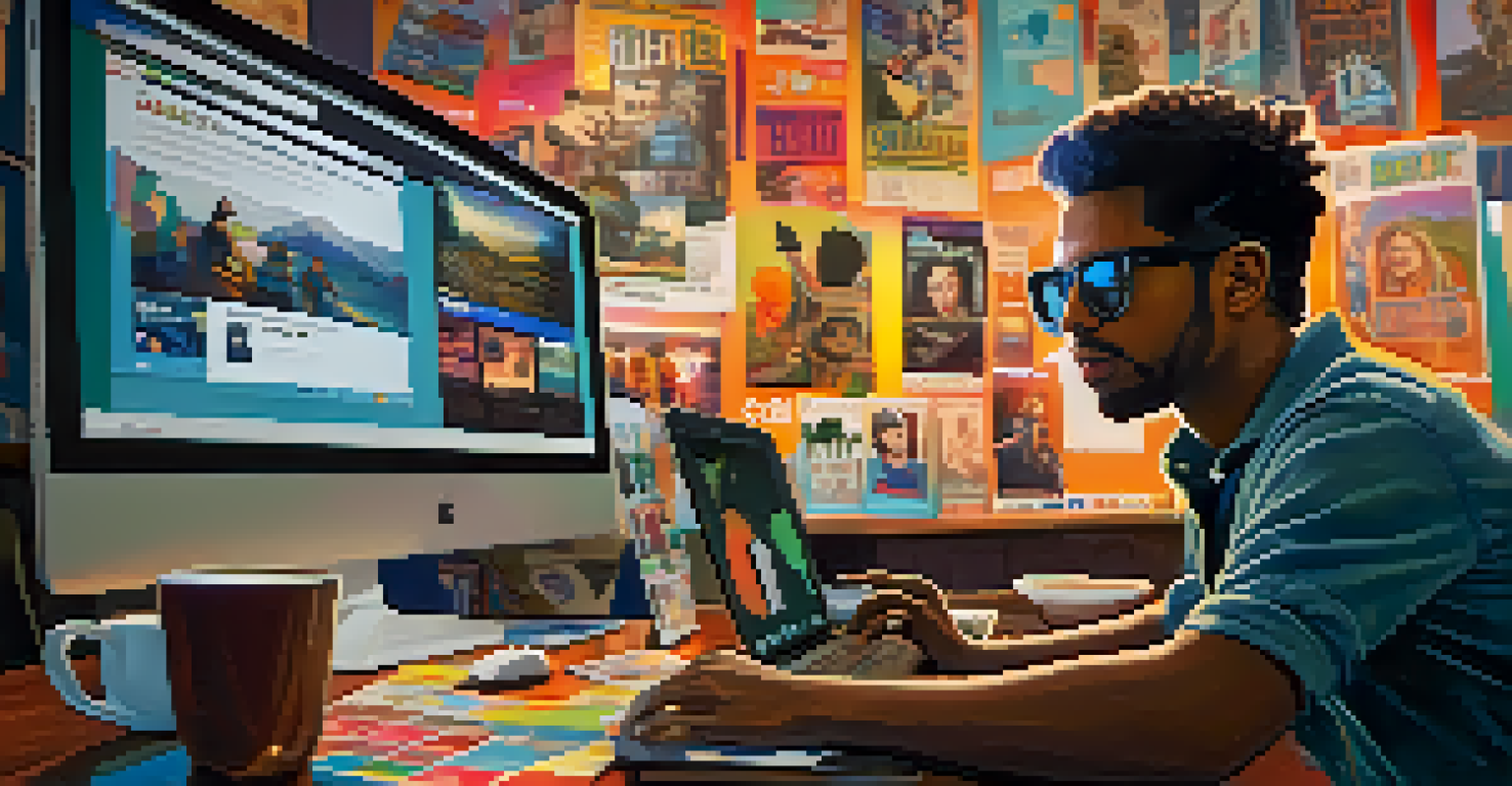Impact of Digital Technology on Independent Filmmaking

The Rise of Affordable Filmmaking Tools
In recent years, the availability of affordable filmmaking tools has surged, allowing independent filmmakers to access high-quality equipment that was once out of reach. DSLRs and mirrorless cameras, once reserved for professionals, can now be purchased at a fraction of the cost. This democratization of technology means that anyone with a passion for storytelling can create compelling visual narratives without breaking the bank.
The best way to predict the future is to create it.
Moreover, software for editing and post-production has also seen a significant price drop. Programs that used to cost thousands of dollars are now available for a monthly subscription or even for free. This accessibility allows filmmakers to spend more time focusing on their stories rather than worrying about budget constraints.
Ultimately, this technological shift not only empowers creators but also fosters a diverse range of voices in the film industry. The creativity of independent filmmakers is no longer limited by their financial resources, leading to an exciting array of films that reflect unique perspectives.
Enhanced Distribution Channels Through Digital Platforms
Digital technology has transformed how independent films are distributed, moving away from traditional theaters to online platforms. Services like Netflix, Amazon Prime, and Vimeo have opened doors for filmmakers to reach global audiences without the need for a distribution deal. This shift means that a small film made in a garage can find its way into homes around the world.

Additionally, social media platforms have become vital tools for marketing and audience engagement. Filmmakers can now connect directly with their viewers, build communities, and generate buzz before their films even premiere. This grassroots approach to marketing helps independent films gain traction and visibility in an oversaturated market.
Affordable Tools Empower Filmmakers
The rise of budget-friendly filmmaking equipment and software allows independent creators to tell their stories without financial constraints.
As a result, the barriers to entry have lowered, allowing filmmakers to showcase their work to an audience that may have previously been inaccessible. This newfound freedom enables creators to share their stories and perspectives more broadly, enriching the cinematic landscape.
The Role of Crowdfunding in Independent Film Projects
Crowdfunding has emerged as a powerful tool for independent filmmakers looking to finance their projects. Platforms like Kickstarter and Indiegogo allow creators to pitch their ideas directly to potential supporters, raising funds without relying on traditional investors. This model not only provides necessary financial backing but also fosters a sense of community around a project.
Storytelling is the most powerful way to put ideas into the world today.
Moreover, crowdfunding campaigns can serve as a marketing strategy, generating early interest and engagement before a film is even completed. Filmmakers can leverage social media to share updates and connect with backers, creating a loyal audience eager to see the final product. This interaction can turn supporters into ambassadors who promote the film to their networks.
Ultimately, crowdfunding empowers creators to maintain artistic control over their projects and pursue their vision without external pressures. This independence can lead to more authentic storytelling that resonates with audiences, as filmmakers craft narratives that truly reflect their passions.
Virtual Reality and Immersive Storytelling Innovations
Digital technology has given rise to innovative storytelling formats, such as virtual reality (VR) and augmented reality (AR). These immersive experiences allow audiences to engage with stories in ways that traditional cinema cannot. For independent filmmakers, this opens up exciting new avenues for creativity and audience interaction.
For example, VR can transport viewers into the heart of a story, making them active participants rather than passive observers. This shift in perspective can create emotional connections that enhance the impact of the narrative. It also encourages filmmakers to think outside the box and experiment with how stories are told.
Digital Platforms Expand Reach
Online distribution channels and social media enable independent films to reach global audiences and foster direct engagement with viewers.
As these technologies continue to evolve, independent filmmakers have the opportunity to carve out a niche in this emerging landscape. By embracing VR and AR, they can push the boundaries of conventional filmmaking and offer audiences unique experiences that challenge traditional storytelling norms.
The Influence of Social Media on Audience Engagement
Social media plays a pivotal role in shaping how independent filmmakers engage with their audiences. Platforms like Instagram, Twitter, and TikTok allow creators to share behind-the-scenes content, engage in conversations, and build anticipation for their films. This level of interaction fosters a sense of connection between filmmakers and viewers, which can be invaluable for a successful release.
Additionally, social media serves as a powerful marketing tool, enabling filmmakers to promote their work to a vast audience without a hefty budget. Creative campaigns can go viral, reaching thousands or even millions of potential viewers. This organic reach can be more effective than traditional advertising methods, as audiences are often more receptive to content shared by their peers.
As filmmakers harness the power of social media, they can cultivate dedicated fan bases that support their projects. This connection not only benefits individual films but also contributes to a thriving independent film community that values creativity and innovation.
Collaborative Filmmaking Through Digital Technology
Digital technology has revolutionized collaboration in independent filmmaking, allowing creators from around the world to connect and work together seamlessly. With tools like cloud storage, project management software, and video conferencing, filmmakers can collaborate on projects regardless of their physical location. This opens up exciting opportunities for diverse perspectives and creative synergies.
For instance, a director in Los Angeles can work with a cinematographer in Tokyo and an editor in London, all contributing their unique skills and viewpoints to a single project. This global collaboration enriches the storytelling process and helps filmmakers create more nuanced narratives that resonate with a broader audience.
Crowdfunding Boosts Creative Control
Crowdfunding empowers filmmakers to finance their projects while maintaining artistic independence and building community support.
By embracing these collaborative tools, independent filmmakers can expand their networks and enhance the quality of their work. This connectivity fosters a sense of community within the industry, encouraging knowledge sharing and support among creators.
The Challenge of Digital Overload in Filmmaking
While digital technology offers numerous advantages, it also presents challenges for independent filmmakers, particularly in the form of digital overload. With so many tools, platforms, and distribution channels available, it can be overwhelming to navigate the landscape. Filmmakers may struggle to determine which technologies and strategies best suit their projects.
Additionally, the sheer volume of content available online can make it difficult for independent films to stand out in a crowded marketplace. As audiences are bombarded with options, capturing attention becomes increasingly challenging. Filmmakers must find innovative ways to market their work and reach their target audiences effectively.

To overcome these hurdles, independent filmmakers need to focus on their unique voice and vision. By honing their craft and utilizing the right tools, they can create meaningful stories that resonate with audiences, cutting through the noise in the digital age.